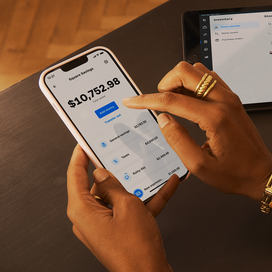Table of contents
This article is only for educational purposes and does not constitute legal, financial, or tax advice. Make sure you consult a professional regarding your unique business needs. Government programs are subject to frequent changes and updates. Please check the applicable government website to get the most current information on the Paycheck Protection Program.
Editor’s note: This article was updated in November 2021 with updated information on PPP loan forgiveness and tax implications. The second round of PPP loans closed May 31, 2021.
The second round of the Paycheck Protection Program (PPP) opened to eligible borrowers January 19, 2021. The Consolidated Appropriations Act 2021 includes a second round of funding for the PPP, aimed to help small businesses that remain financially impacted by the pandemic.
Small-business owners could turn to the second-draw PPP loan to help sustain their businesses whether they’ve taken a PPP loan previously or this is their first one. Almost half of business owners polled by the National Federation of Independent Businesses (NFIB) plan to apply for the second PPP loan if eligible.
How do I apply for the new PPP loan?
To apply for the second round, contact your bank or lender. If you’re a Square seller, you can learn more about how to apply through Square Loans. The deadline to apply was May 31, 2021.
Depending on where you apply, there may be different application requirements. However, that’s the only thing that might differ. Your eligibility, forgiveness, and loan terms won’t change.
What can I use a PPP loan for?
To get your second PPP loan fully or partially forgiven, you need to spend the loan money on forgivable expenses. The first PPP round included expenses like utilities, rent, payroll, employer-sponsored health insurance, and other eligible expenses, which are also covered in this second round.
The second round of PPP funding includes four categories of additional covered expenses:
- Operational expenses: For cloud computing, HR, and accounting software.
- Property damage costs: For damages caused by public disturbances in 2020 that were not covered by your business insurance.
- Supplier costs: For payments made to suppliers before taking the PPP loan that were essential for keeping your business running.
- Worker protection costs: For PPE and other investments made to abide by local and federal COVID-19 business guidelines.
For more guidance on whether a business expense is covered, check out the U.S. Small Business Association’s website or get in touch with your CPA or another tax professional.
Am I eligible for the new round of PPP?
Companies with 300 or fewer employees who suffered a 25% drop in any quarter’s revenue from 2019 to 2020 are eligible for the second round of PPP. This means a 25% or more reduction in gross income from any quarter in 2020 relative to that same quarter in 2019 or during the year of 2020 as compared to the year of 2019.
It’s important to note that in the first round of PPP, companies with 500 or fewer employees were eligible.
Unlike the first round, new entity types are now eligible, including:
- Trade organizations
- Chambers of commerce
- Non-profits or government instrumentalities that engage in destination or tourism marketing with 300 or fewer employees
- Owners with non-fraud related felony convictions
- Owners who are delinquent on student loans
- Non-citizens who are U.S. residents, like Green Card or visa holders
As with the previous round, this round also includes:
- Non-profit organizations
- Housing cooperatives
- Veterans organizations
- Self-employed individuals
- Sole proprietors
- Independent contractors
- Seasonal businesses
This additional round of PPP also more clearly defines seasonal businesses for purposes of calculating the PPP loan amount. Seasonal businesses that operate for no more than seven months out of the year or earned less than a third of its receipts in any six months of the previous year can have their PPP loan calculated on any 12-week period during 2019 or 2020.
There are also ineligible businesses that include entities primarily engaged in political activities or lobbying, publicly traded companies, and entities partially controlled by members of Congress.
In the new PPP loan application, you’ll need to verify that you need the funds for business operations and that you haven’t permanently shut down. If you’ve already taken the first PPP loan, you’ll need to certify that you already have used — or are planning to use — the initial PPP loan for eligible expenses before or on the date you get your second loan.
What if I didn’t get a PPP loan in the first round?
Previous PPP loan receivers and new applicants are both eligible for a second-round PPP loan.
However, if you previously received a loan, you must have used — or plan to use — the full amount of your first PPP. You must also demonstrate a 25% reduction in gross receipts in 2020 relative to the same quarter in 2019, or during the year 2020 as compared to 2019.
How is the second round of PPP calculated?
If you haven’t taken out a PPP loan yet, then you may be eligible to take a first or initial draw. For first-time PPP borrowers, you can borrow whatever amount is lowest: 2.5 times your average cost for payroll or $10 million.
If you’re applying for a second round, you may be eligible for what’s called a second draw, which is whatever amount is lowest: $2 million or 2.5 times your average monthly cost for payroll during 2019, 2020,or the year before you took your PPP loan. If your business’code starts with 72, it’s 3.5 times your average monthly payroll expenses.
Additionally, business owners that file a Form 1040 Schedule C can choose to have their PPP loan calculated based on their net profit or gross income.
Will this second PPP loan be forgiven in whole or partially?
The loans for the second round of PPP forgiveness are up to $2 million (as opposed to the maximum of $10 million in the first round), and during the forgiveness process, you may choose a covered period between eight to 24 weeks.
If a loan is less than $150,000, the loan amount shall be forgiven if the recipient completes a one page form and submits certain certifications to the lender. The certifications include:
-
The number of eligible employees the business was able to retain
-
The amount of the loan spent on payroll costs
-
The total loan amount
If your loan is greater than $50,000, your loan forgiveness could be reduced based on the number of employees and salaries that fell more than 25%. Note that borrowers must retain relevant records related to employment for four years and other records for three years. For loans above $150,000, records will need to be retained for six years. In all cases, any PPP loan records may be reviewed and audited for fraud by the SBA later.
At least 60% of the PPP loan must be used for payroll costs to be eligible for full forgiveness, just like the first round of PPP. If borrowers do not apply for forgiveness within 10 months after the last day of the covered period, PPP loan payments are no longer deferred. Be sure to contact your lender for the correct form.
Do I have to pay taxes on my PPP loan?
In December of 2020, Congress passed into law the Coronavirus Response and Relief Supplemental Appropriations Act (CRRSAA), which details taxing in relation to PPP loans. If you have taken out a PPP loan and received forgiveness for it, that loan is completely tax-exempt and is not considered taxable income.
For further up-to-date information around PPP loans, the U.S. Chamber of Commerce has released an updated guide to Small Business COVID-19 Emergency Loans, detailing changes to taxes and PPP loans since the December 2020 law went into effect. It is also important to note that PPP loans cannot be used to pay business taxes.
Square received over 140,000 loan applications in the first round of PPP, facilitating over $820 million in PPP loans for 76,000 small businesses. The average loan size for a business was less than $11,000.
As many small business owners have had to rethink their operations during the pandemic, understanding the new PPP loan has been a top priority for those who are hopeful that a stimulus will extend their runway.
Learn more about how to apply for the second PPP loan through Square Capital.
![]()












